
April 30 deadline to apply for Tremont Writers Conference
Frank X Walker and David Brill share a fascination with the Great Smoky Mountains. One

Frank X Walker and David Brill share a fascination with the Great Smoky Mountains. One
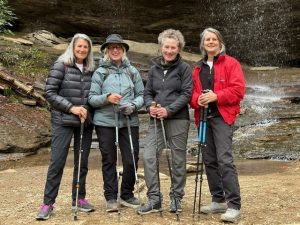
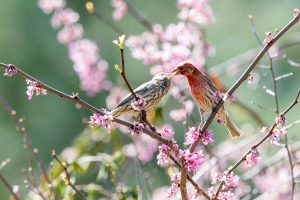
As the days grow warmer and the landscape ripples with color, a growing treetop chorus

Two decades ago, thousands of flies, bugs, and beetles met their end in insect traps
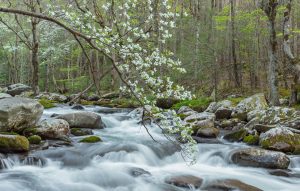
In the heart of Great Smoky Mountains National Park, the arrival of spring unveils a
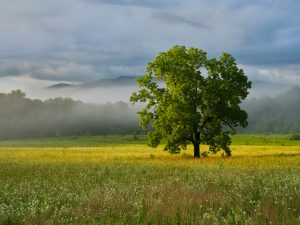
Photography is quite simple, and yet at times it can seem hopelessly complex. Some people go to university to study photography and get advanced degrees, but others manage to do it without any special training at all.
Not a photographer, you say? Chances are you already have a camera app on your phone that has amazing features and boundless potential. Most of us use these cameras almost daily to record moments spent with friends or family. So, if you think you aren’t a photographer, you are. If you think you don’t have a decent camera, you do.
Photography is basically about saving and sharing special moments. The tools vary, but the outcome is the same—an image. I hope to help you improve the images you take away and make you better at using whatever tools you happen to have at hand.
There are many special places in Great Smoky Mountains National Park that become even more so at certain times of the year. Summer is in full swing, so we’ll start there.
What’s Happening Now?
On Cades Cove Loop Road, there are perennial stands of Queen Anne’s lace, as well as black-eyed Susan. The best ones are near the intersection with Hyatt Lane and about half a mile past the intersection with Sparks Lane on the return side. They make great subject matter for images—from grand scenic views all the way down to close-ups and macros.
What do you do with this huge field of flowers before you? Painters start with a blank canvas and add to it. Photographers take things away that are distracting until the final image is revealed. There can be many such reveals in any one location. Start by taking a few minutes to enjoy the moment and look for focal points to anchor your interest. One of the biggest downfalls is trying to take in too much of the scene.
The Photographic Experience
Before you go, check the weather. Early morning fog is common in the Cove, and it can be a treat to work with for experienced photographers. Look for it when the temperature and the dewpoint are close to equal just before sunrise—within three degrees of each other is a good rule of thumb. Fog dissipates quickly, so being at the gate when it opens at sunrise is a must—bye-bye sleep! This information can be found on the National Weather Service site, weather.gov. Search for Cades Cove, look at the hourly graph, and there you are. There are many weather apps that can give you the same information.
Light matters. The best quality light is early and late in the day; the harsh midday light is much harder to work with. Slept in, spur of the moment, afternoon picnic? No worries—there are still good opportunities. As evening light softens, it becomes more attractive, and the area will eventually fall into shadows, providing soft light later in the day.
Amongst the Queen Anne’s lace in Cades Cove is a large walnut tree that makes a great compositional focal point. There are also many opportunities for close-up images and fields of black-eyed Susan flowers stretching into the distance. These areas play well in back-lighted situations, with a translucent glow that only occurs in such situations.
Pro Tips
• If the sky is interesting, consider including it in your composition; if not, exclude it.
• If the foreground is dull and uninteresting, use a longer focal length for a tighter rendition.
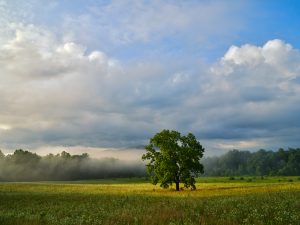 | 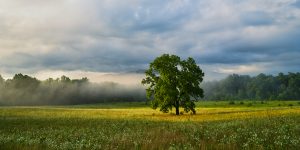 |   |
| A wider-angle lens makes elements in the scene smaller and often includes distracting or uninteresting elements. Here, the clouds fade into a weaker sky, and the tree’s impact is reduced. Yet, within this scene are two tighter compositions that have more appeal—at least to me. | Within the larger scene is this panorama that strengthens the composition by drawing attention to the band of light, the tree, and the clouds, which are of more interest. | A longer focal length does the same thing by focusing tighter on the dominant features in the scene here, with the long end of the zoom used in the first image. |
As you enjoy the view, try to see as the camera does. And a word of caution: flowers and vegetation are easily trampled; work from the edges rather than wading into the middle. As always, take only pictures and, in this instance, be aware of your footprints.
Remember to enjoy the moment; time spent in the park is special.
Nye Simmons is a writer and photographer who has been photographing the Smokies since the 1970s. He is the author of the Greater Smoky Mountains Photographer’s Guide and Tennessee Wonder and Light. He is also a collaborating photographer on Great Smoky Mountains Wonder and Light, as well as several books about the Blue Ridge Parkway. He currently offers photography workshops in the Smokies and beyond. Find him on the web at nyesimmons.com.
The Great Smokies Welcome Center is located on U.S. 321 in Townsend, TN, 2 miles from the west entrance to Great Smoky Mountains National Park. Visitors can get information about things to see and do in and around the national park and shop from a wide selection of books, gifts, and other Smokies merchandise. Daily, weekly, and annual parking tags for the national park are also available.